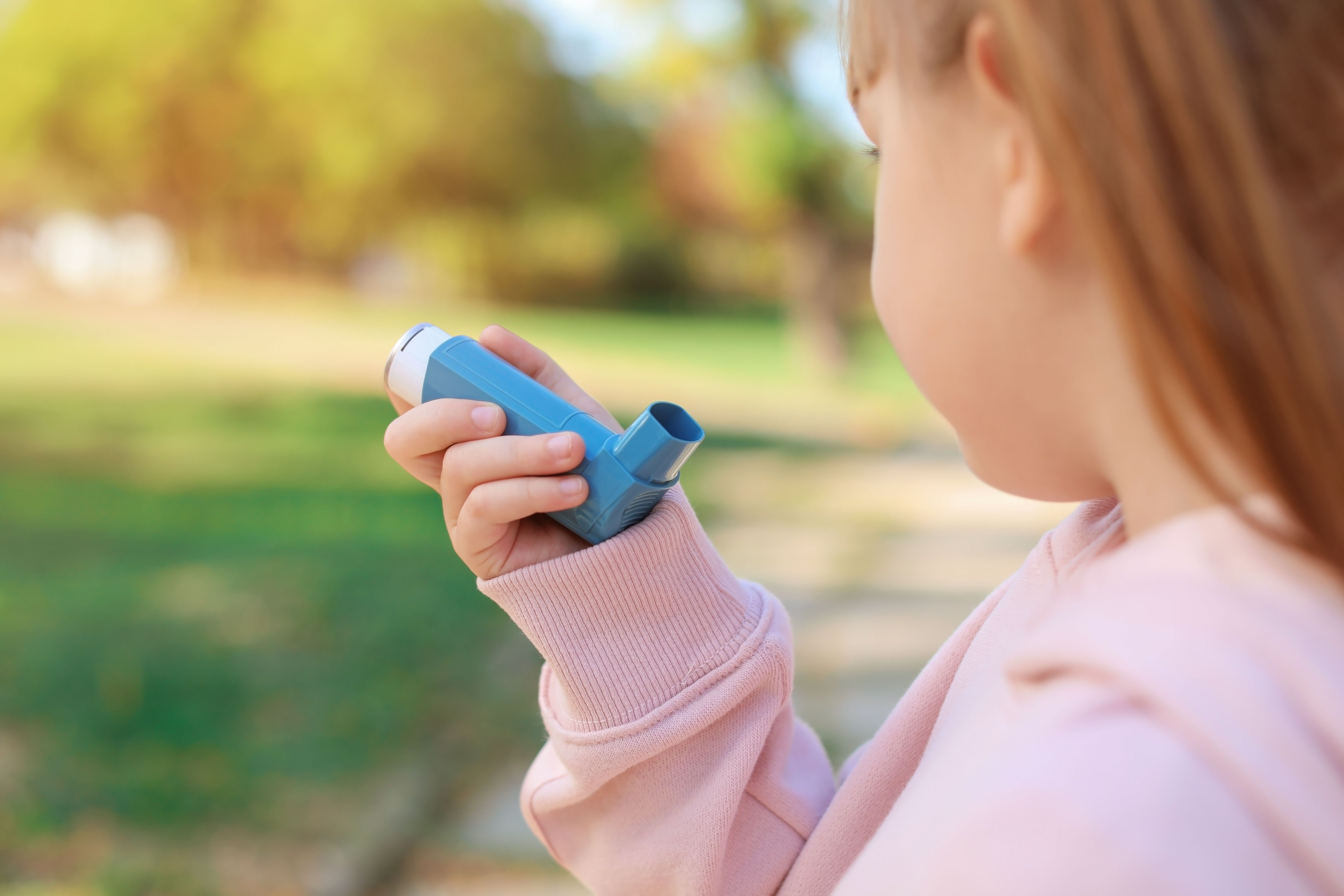Early-life ozone exposure linked to increased risk of asthma and wheeze in young children
A new study published in JAMA Open Network suggests that early-life exposure to ambient ozone (O3) may contribute to an increased risk of asthma and wheeze in young children.
Image Credit: © New Africa- stock.adobe.com.

A new multisite cohort study published in JAMA Open Network suggests that early-life exposure to ambient ozone (O3) may contribute to an increased risk of asthma and wheeze in young children.1
The findings, published as part of the ECHO-PATHWAYS consortium, indicate that even in regions with relatively low ozone levels, exposure during the first 2 years of life may influence respiratory health outcomes at ages 4 to 6 years.
"Ozone (O3) is the most frequently exceeded air pollutant standard in the US,"2 wrote the authors. "While short-term exposure is associated with acute respiratory health, the epidemiologic evidence linking postnatal O3 exposure to childhood asthma and wheeze is inconsistent and rarely evaluated as a mixture with other air pollutants."
Study design
The study pooled data from 6 US cities, analyzing information from 1,188 children born at full term (≥37 weeks). Researchers included participants who had complete airway surveys and residential address histories for their first 2 years of life. Data collection spanned from 2007 to 2023, allowing for a long-term analysis of environmental exposure and respiratory outcomes.
To estimate O3 exposure, the study used a validated spatiotemporal model based on residential addresses.
Additionally, researchers examined the interaction of O3 with fine particulate matter (PM2.5) and nitrogen dioxide (NO2), two other common air pollutants known to impact respiratory health.
Key findings
At ages 4 to 6 years, 12.3% of the children in the study had current asthma, while 15.8% experienced wheeze. A 2-parts-per-billion (ppb) increase in ozone concentration was associated with a 31% higher likelihood of asthma (odds ratio [OR], 1.31; 95% confidence interval [CI], 1.02-1.68) and a 30% higher likelihood of wheeze (OR, 1.30; 95% CI, 1.05-1.64) at this age range.
However, these associations did not persist at ages 8 to 9 years. Sensitivity analyses, which adjusted for various socioeconomic and neighborhood factors, also yielded null associations at this later stage of childhood.
Despite this, Bayesian kernel machine regression (BKMR) analyses supported the role of O3 exposure in combination with other air pollutants in early-life respiratory health outcomes.
"In this cohort study with relatively low ambient O3 exposure, early-life O3 was associated with asthma and wheeze outcomes at age 4 to 6 years and in mixture with other air pollutants but not at age 8 to 9 years," wrote the authors. "Regulating and reducing exposure to ambient O3 may help reduce the significant public health burden of asthma among US children."
Conclusion
This study provides further evidence that early-life exposure to ozone, even at relatively low levels, may contribute to an increased risk of asthma and wheeze in young children. While the effects appear to diminish by later childhood, these findings emphasize the importance of air quality interventions to help reduce the burden of respiratory conditions in pediatric populations.
Regulatory measures aimed at controlling ambient ozone levels may offer a preventive strategy to protect vulnerable children from developing asthma and wheeze, ultimately reducing the public health impact of these conditions.
References
1. Dearborn LC, Hazlehurst MF, Sherris AR, et al. Early-Life Ozone Exposure and Asthma and Wheeze in Children. JAMA Netw Open. 2025;8(4):e254121. doi:10.1001/jamanetworkopen.2025.4121
2. US EPA O. Environments and contaminants—criteria air pollutants. May 7, 2015. Accessed April 4, 2025. https://www.epa.gov/americaschildrenenvironment/environments-and-contaminants-criteria-air-pollutants
The Role of the Healthcare Provider Community in Increasing Public Awareness of RSV in All Infants
April 2nd 2022Scott Kober sits down with Dr. Joseph Domachowske, Professor of Pediatrics, Professor of Microbiology and Immunology, and Director of the Global Maternal-Child and Pediatric Health Program at the SUNY Upstate Medical University.
Overview of biologic drugs in children and adolescents
March 10th 2025A presentation at the 46th National Association of Pediatric Nurse Practitioners (NAPNAP) conference explored the role of biologics in pediatric care, their applications in various conditions, and safety considerations for clinicians.